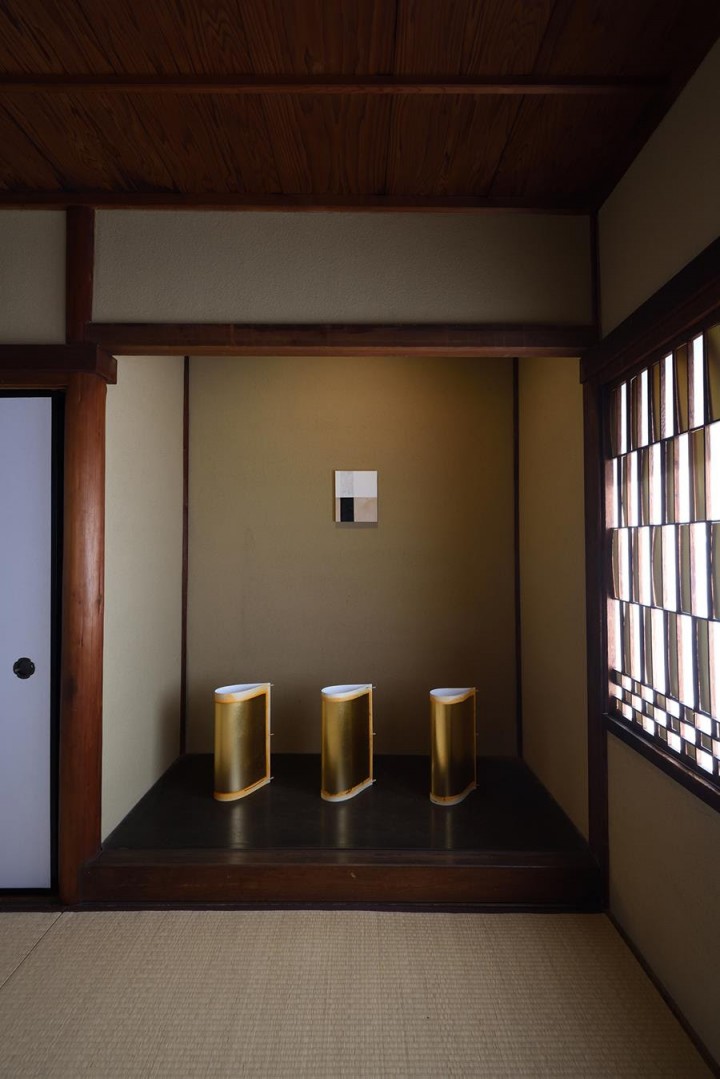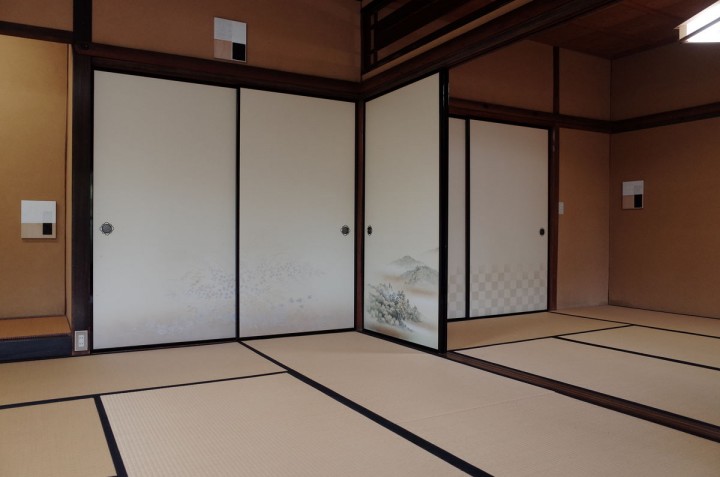Scottish Art News
Latest news
Magazine
News & Press
Publications
In Praise of Shading
By Greg Thomas, 26.03.2021

In his iconic 1933 study of Japanese aesthetics, In Praise of Shadows, Jun'ichirō Tanizaki expounds the beauty of muted tones and matt textures: “we do our walls in neutral colors so that the sad, fragile, dying sunrays can sink into absolute repose….the walls of the sitting room will almost always be of clay textured with fine sand.” Paintings, meanwhile, are to be hung in dusky alcoves, valued as “nothing more than another delicate surface upon which the faint, frail light can play.”
Would Alan Johnston’s paintings have met Tanizaki’s requirements? Since the 1990s, inspired by his journeys across Japan, Johnston has been producing understated geometrical compositions in greys, blacks, browns, and whites, often designed for and pictured within Japanese interiors. A new show at Bartha Contemporary combines an iconic set of pieces first displayed at Haus Wittgenstein, Vienna and Inverleith House, Edinburgh, in 1995 with a larger sequence created over the last five years for display at regional museums and project spaces across Japan. These works are influenced by the ideas underpinning Wabi-Sabi, a Buddhist-inflected strain in Japanese aesthetics and culture which values art, architecture, and design whose rough-hewn simplicity cultivates an awareness of the impermanence and imperfection of life.
Roughness of texture and asymmetry are hallmarks of Wabi-Sabi. Johnston’s three 1990s pieces evince both qualities, with their linen canvas backings oscillating tonally between grey-brown and faint green. Overlaid rectangles of black and white are placed irregularly—only in an untitled 1994 diptych does the composition offer the kind of stark symmetry reminiscent of Albers’s Mesoamerican architectonics. Johnston’s recent works, meanwhile, are created on prefabricated wooden panels, with the same opaque black squares counterposed with whites, within which further offset quadrilaterals are implied through delicate top layers of pencil-scribble.
 Alan Johnston, installation in Japan. Courtesy Bartha Contemporary.
Alan Johnston, installation in Japan. Courtesy Bartha Contemporary.
The effect of these paintings is bound up not so much in the combination of colour and shape as in the suggestion of layered elements allowing different levels of light to penetrate to the surface. Johnston’s facture elides its basis in paint, occasionally suggesting objects glimpsed at different distances within an architectural volume, perhaps divided by shoji screens—suitably enough, given the composition of these pieces with Japanese interiors in mind. At other times, the implication is of an aerial view, with the different shaded volumes as tatami mats or tables. It is interesting to note that Johnston’s practice also incorporates architectonic sculpture – he often collaborates with the architects Shinichi Ogawa in Tokyo and Neil Gillespie in Edinburgh – while his two-dimensional work has at time recreated the layout of particular built environments.
There is a Scottish heritage to the Buddhist-influenced aesthetics that Johnston is tapping into here, running back to Neil Gunn’s Atom of Delight; so too to the ideas of “generalism” and gesamtkunstwerk that he cites as influences, with a particular eye on the “Philosophical Generalisms” of the nineteenth-century Scottish polymath Patrick Geddes. One upshot of Geddes’s emphasis on interaction between disciplines was a necessary internationalism. Suitably enough, Johnston’s practice finds enlightening relief against a Western, post-constructivist backdrop, from De Stijl to concrete art and North-American minimalism. But the subtlety, tone, and patina of his work is a testament to his deep engagement with a wholly separate philosophical and aesthetic system. Works to be enjoyed quietly and slowly.
'Alan Johnston - Japan' can be viewed online, until the 19th April, here, via the Artsy viewing rooms.




